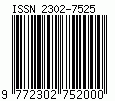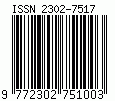Land Conversion and Farmer Exclusion: Land Tenure Change and Livelihoods Transformation in Sukamakmur Village, Karawang Regency
Abstract
The conversion of agricultural land in Karawang Regency, particularly in Sukamakmur Village, has significantly disrupted farmers' livelihoods. This study examines the socio-economic changes farmers experienced before and after exclusion from their cultivated lands. Using a qualitative case study approach, data were gathered through interviews with ten informants across different land tenure classes, alongside insights from government officials and stakeholders. The findings reveal that policies favoring industrial development, speculative land sales, and inadequate irrigation infrastructure have driven widespread land conversion. These forces compelled farmers to sell their land, resulting in shifts in land ownership, reduced incomes, and altered livelihoods. Many displaced farmers became tenants, sharecroppers, or laborers, while others left agriculture entirely. Low education and skill deficits further hindered their ability to transition to industrial jobs, exacerbating inequality and poverty. This study highlights the systemic marginalization of farmers and calls for policies to protect their rights and promote equitable rural development.
References
Abhipraya, F.A., Purnomo, E.P., Agustiyara, A. (2020). Proses Eksklusi Sosial Kelompok Petani: Analisis Dampak Fenomena Urban Sprawl di Kabupaten Sleman Daerah Istimewa Yogyakarta. Indonesian Governance Journal: Kajian Politik-Pemerintahan, 3(1), 24-36. https://www.researchgate.net/publication/343588386_PROSES_EKSKLUSI_SOSIAL_KELOMPOK_PETANI_Analisis_Dampak_Fenomena_Urban_Sprawl_di_Kabupaten_Sleman_Daerah_Istimewa_Yogyakarta
Amalina, B., Binasasi, S.D., Purnaweni, H. (2018). Formulasi Kebijakan Perlindungan Lahan Pertanian Pangan Berkelanjutan di Kabupaten Karawang. Gema Publica: Jurnal Manajemen dan Kebijakan Publik, 3(2), 92-102. https://doi.org/10.14710/gp.3.2.2018.92-102
Badan Pusat Statistik Kabupaten Karawang dalam Angka, 2007. Statistik Indonesia Tahun 2007. Kabupaten Karawang : Badan Pusat Statistik.
Badan Pusat Statistik Kabupaten Karawang dalam Angka, 2010. Statistik Indonesia Tahun 2010. Kabupaten Karawang : Badan Pusat Statistik
Badan Pusat Statistik Kabupaten Karawang dalam Angka, 2017. Statistik Indonesia Tahun 2017. Kabupaten Karawang : Badan Pusat Statistik
Badan Pusat Statistik Kabupaten Karawang dalam Angka, 2018. Statistik Indonesia Tahun 2018. Kabupaten Karawang : Badan Pusat Statistik
Badan Pusat Statistik Kabupaten Karawang dalam Angka, 2020. Statistik Indonesia Tahun 2020. Kabupaten Karawang : Badan Pusat Statistik
Badan Pusat Statistik Kabupaten Karawang dalam Angka, 2022. Statistik Indonesia Tahun 2022. Kabupaten Karawang : Badan Pusat Statistik
Bachriadi, D, Aspinal, Edward. 2023), Pembangunanisme Jilid II: Empat Kasus Pengadaan Tanah bagi Pembangunan untuk Kepentingan Umum di Tanah Jawa. Yogyakarta: LBH-Yogyakarta.
Chofyan, I., Rustan, U., Hariyanto, A. (2016). Upaya Mempertahankan Kabupaten Karawang Sebagai Lumbung Padi Nasional. Ethos: Jurnal Penelitian dan Pengabdian Kepada Masyarakat. 4(1), 149-160. https://doi.org/10.29313/ethos.v0i0.1685
Creswell, J. W. (2014). Research Design: Qualitative, Quantitative, and Mixed Methods Approaches. SAGE.
Dwipradnyana, I.M.M., Windia, W., Sudarma, I.M. (2015). Faktor-faktor yang Mempengaruhi Konversi Lahan serta Dampaknya Terhadap Kesejahteraan Petani: Kasus di Subak Jadi, Kecamatan Kediri, Kabupaten Tabanan. Jurnam Manajemen Agribisnis, 3(1), 34-42.
Flyvbjerg, B. (2006). Five Misunderstandings About Case-Study Research. Qualitative Inquiry, 12(2), 219–245. https://doi.org/10.1177/1077800405284363
Flick, U. (2018). An Introduction to Qualitative Research, SAGE.
Hall, D., Hirsch, P., Li, T. (2011). Powers of Exclusion: Land Dilemmas in Southeast Asia. University of Hawaii Press.
Iqbal, M., Sumaryanto, S. (2016). Strategi Pengendalian Alih Fungsi Lahan Pertanian Bertumpu pada Partisipasi Masyarakat. Analisis Kebijakan Pertanian, 5(2), 167-182. https://epublikasi.pertanian.go.id/berkala/akp/article/view/698
Munibah, K., Sitorus, S.R.P., Rustiadi, E., Gandasasmita, K., Hartrisari, H. (2009). Model Hubungan antara Jumlah Penduduk dengan Luas Lahan Pertanian dan Permukiman (Studi Kasus DAS Cidanau, Provinsi Banten). Jurnal Ilmu Tanah dan Lingkungan, 11(1), 32-40. https://doi.org/10.29244/jitl.11.1.32-40
Oktarina, A.N. (2013). Faktor-faktor Yang Mempengaruhi Konversi Lahan Sawah dan Dampaknya Terhadap Sistem Penghidupan Rumahtangga Petani (Studi Kasus: Kecamatan Colomadu Kabupaten Karanganyar). https://digilib.uns.ac.id/dokumen/detail/31991/Faktor-Faktor-Yang-Mempengaruhi-Konversi-Lahan-Sawah-Dan-Dampaknya-Terhadap-Sistem-Penghidupan-Rumahtangga-Petani-Studi-Kasus-Kecamatan-Colomadu-Kabupaten-Karanganyar.
Pewista, I., Harini, R. (2013). Faktor dan Pengaruh Alih Fungsi Lahan Pertanian terhadap Kondisi Sosial Ekonomi Penduduk di Kabupaten Bantul, Kasus Daerah Perkotaan, Pinggiran dan Pedesaan Tahun 2001-2010. Jurnal Bumi Indonesia, 2(2), 96-103. https://www.neliti.com/publications/78219/faktor-dan-pengaruh-alih-fungsi-lahan-pertanian-terhadap-kondisi-sosial-ekonomi#cite
Phuc, N.Q., Westen, A.C.M. van, Zoomers, A. (2014). Agricultural Land for Urban Development: The Process of Land Conversion in Central Vietnam. Habitat International, 41, 1–7. https://doi.org/10.1016/j.habitatint.2013.06.004
Ponte, S., Gibbon, P. (2005). Quality Standards, Conventions and the Governance of Global Value Chains. Economy and Society, 34(1), 1-31. https://doi.org/10.1080/0308514042000329315
Rafiuddin, A, Widiatmaka, Munibah, K. (2016). Pola Perubahan Penggunaan Lahan dan Neraca Pangan di Kabupaten Karawang. Jurnal Ilmu Tanah dan Lingkungan, 18(1), 15-20. https://journal.ipb.ac.id/index.php/jtanah/article/view/12641
Scoones, I. (2021). Sustainable Livelihoods and Rural Development. Practical Action Publishing Ltd.
Sikor, T., & Thanh, T. (2007). Exclusive versus inclusive devolution in forest management: Insights from forest land allocation in Vietnam’s Central Highlands. Land Use Policy, 24, 644–653. https://doi.org/10.1016/j.landusepol.2006.04.006
Soekartawi. (2001). Pengantar Agroindustri. Raja Grafindo Persada.
Suratha, I.K. (2017). Dampak Alih Fungsi Lahan Pertanian terhadap Ketahanan Pangan. Media Komunikasi Geografi, 15(2), 52-61.
Tridakusumah, A., Soetarto, E., Adiwibowo, S., Wahyuni, E.S. (2019). Agrarian Twilight in Rural West Java: From Accumulation to Exclusion. Sodality: Jurnal Sosiologi Pedesaan, 7(1), 78-85. https://doi.org/10.22500/sodality.v7i1.25429
Winarso, H., Kartiwa, A. (2019). Kesenjangan Pemilikan Lahan untuk Pengembangan Perumahan di Jakarta Metropolitan Area. Dalam Shohibuddin, M., Bahri, A.D, eds. Perjuangan Keadilan Agraria, pp. 141-158. Insist Press.
Zhang, Y., & Xie, H. (2019). Welfare Effect Evaluation of Land-Lost Farmers’ Households under Different Livelihood Asset Allocation. Land, 8(11), 176. https://doi.org/10.3390/land8110176
Yin, Robert. K. (2018). Case Study Research and Applications Design and Methods. Singapore; SAGE Publications, Inc.
Copyright (c) 2025 Sonia Aini

This work is licensed under a Creative Commons Attribution-ShareAlike 4.0 International License.
Authors who publish with this journal agree to the following terms:
- Authors retain copyright and grant the journal right of first publication with the work simultaneously licensed under a

This work is licensed under a Creative Commons Attribution 4.0 International License. that allows others to share the work with an acknowledgement of the work's authorship and initial publication in this journal. - Authors are able to enter into separate, additional contractual arrangements for the non-exclusive distribution of the journal's published version of the work (e.g., post it to an institutional repository or publish it in a book), with an acknowledgement of its initial publication in this journal.
- Authors are permitted and encouraged to post their work online (e.g., in institutional repositories or on their website) prior to and during the submission process, as it can lead to productive exchanges, as well as earlier and greater citation of published work (See The Effect of Open Access).




.png)









